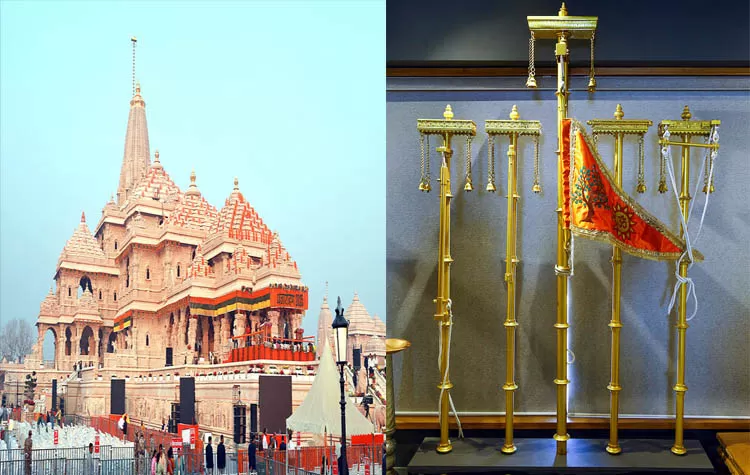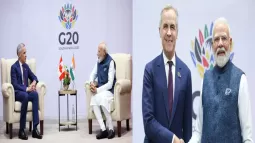
The Ceremony
A grand Dhwajarohan ceremony was organized in Ayodhya, the famous pilgrimage town in Uttar Pradesh. It was held at the Ram Temple, believed to be a site where Lord Rama used to reside. On Tuesday, Prime Minister Narendra Modi raised the saffron-colored Dharma flag over the sanctum sanctorum. RSS chief Mohan Bhagwat, UP Governor Anandiben Patel, CM Yogi Adityanath, and other dignitaries joined the event. They later offered aarti to Lord Rama.
Key Details of the Dhwajarohan
- The ceremony marked the end of the construction of the Ram Temple. It was watched by some 7,000 people.
- The Prime Minister hoisted the flag atop the temple, which was 42 feet high.
- The saffron flag was 22 feet in length and 11 feet in width.
- It consisted of a right-angled triangle.
- Emblems like the sun, the Kovidara tree, and Om were worked out in gold thread embroidery. They are symbolic of the strength and brilliance that Lord Rama is associated with.
Cultural and Historical Significance
This flag signifies unity, continuity of culture, and ideals associated with Rama Rajya. According to Valmiki's Ramayana, the Kovidara tree was said to have appeared from the combination of the Mandara and Parijata plants by the sage Kashyapa. The mention of this proves that grafting of plants was done in ancient times.
Importance of the Date
The flag hoisting happened on Vivah Panchami, the day celebrated as the wedding anniversary of Sita and Rama. The Puranas say that Lord Rama was born under the Abhijit ascendant. This significance was matched at this time by holding the ceremony during the Abhijit ascendant.
Flag Manufacturing Details
This flag has been prepared by a parachute manufacturing company in Ahmedabad, Gujarat. Parachute-grade cloths were used by the makers along with silk threads. The crafting has been done in 25 days to make it strong and durable.














